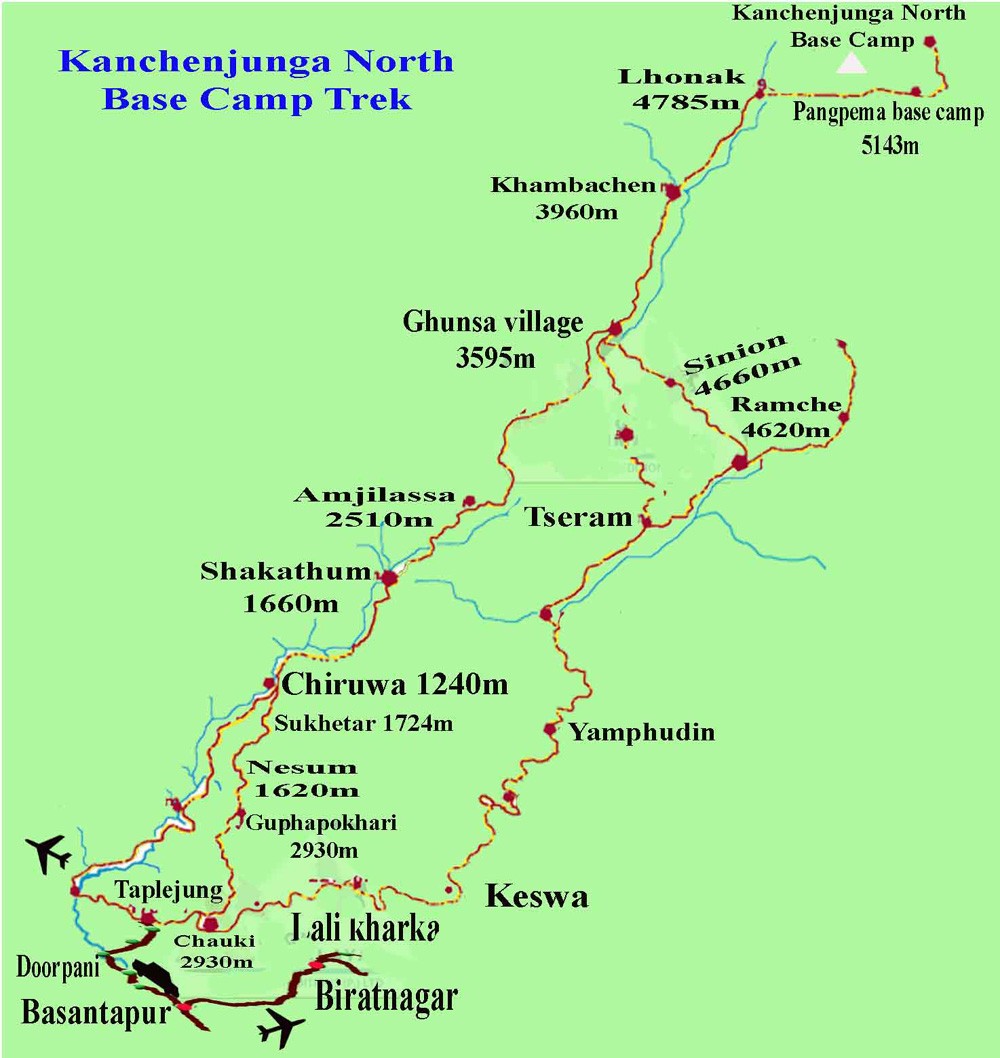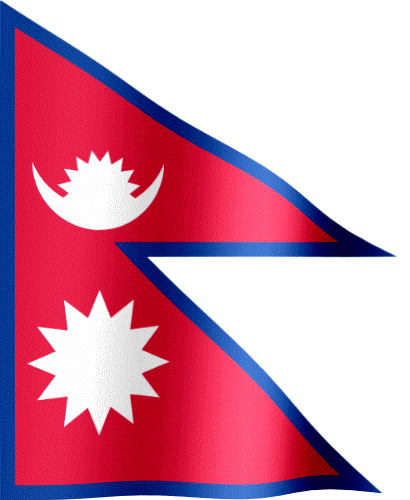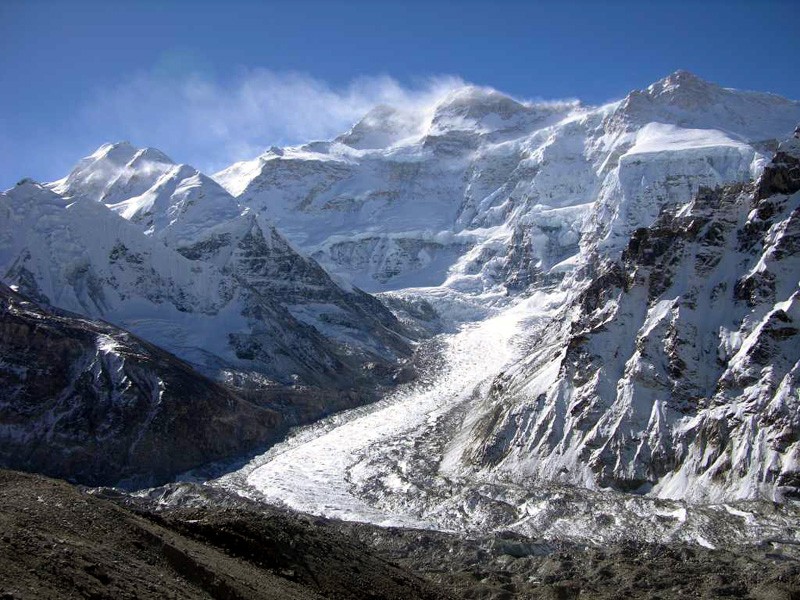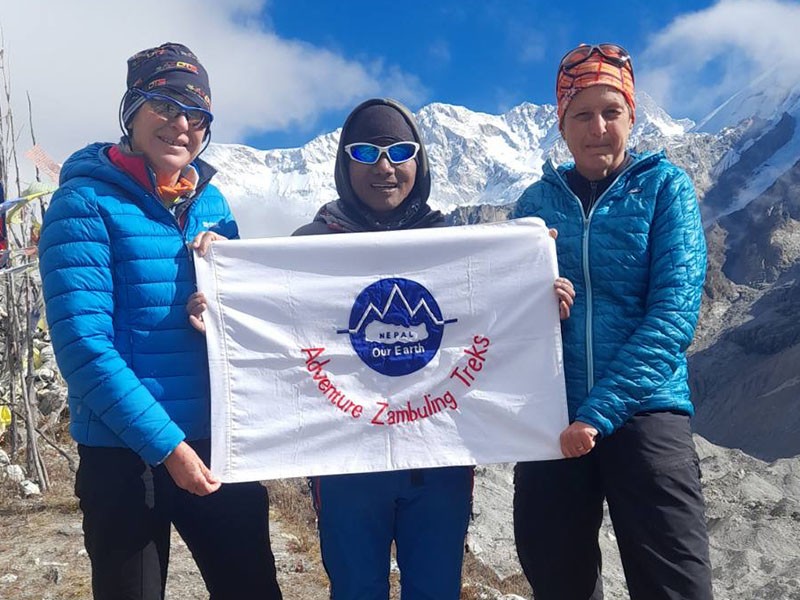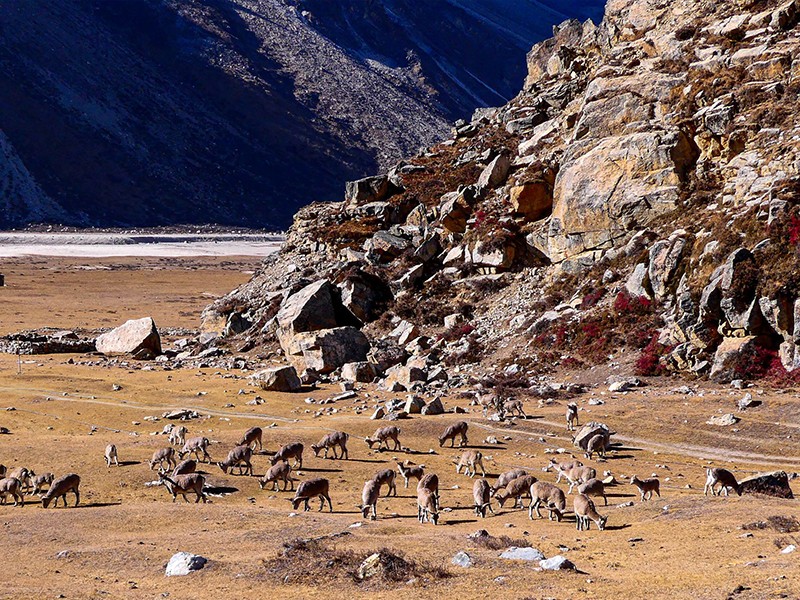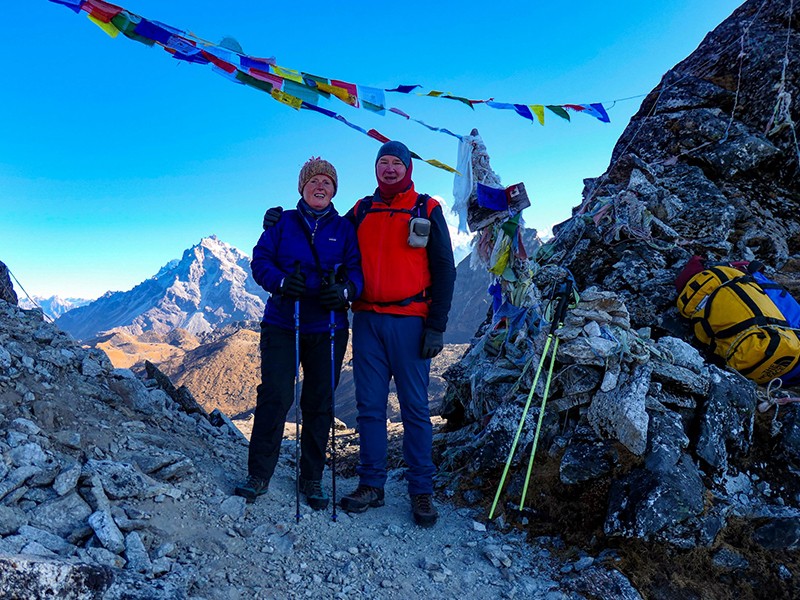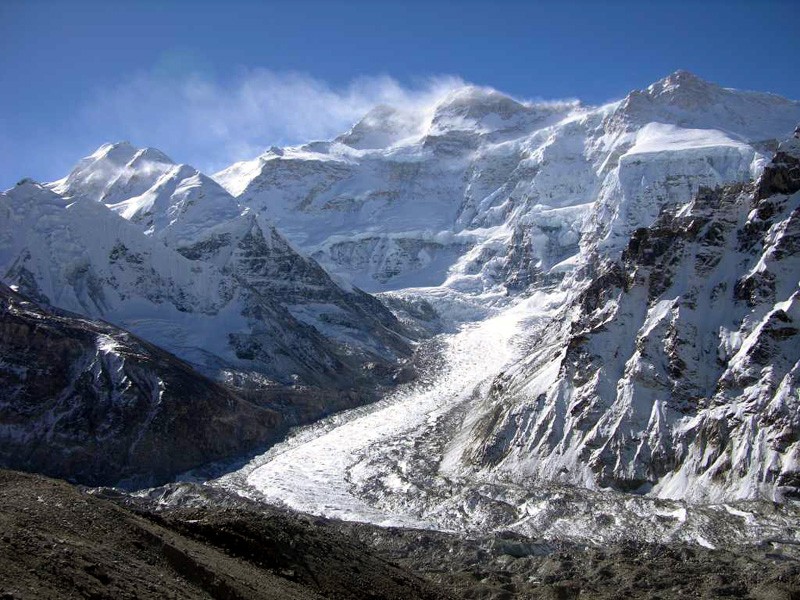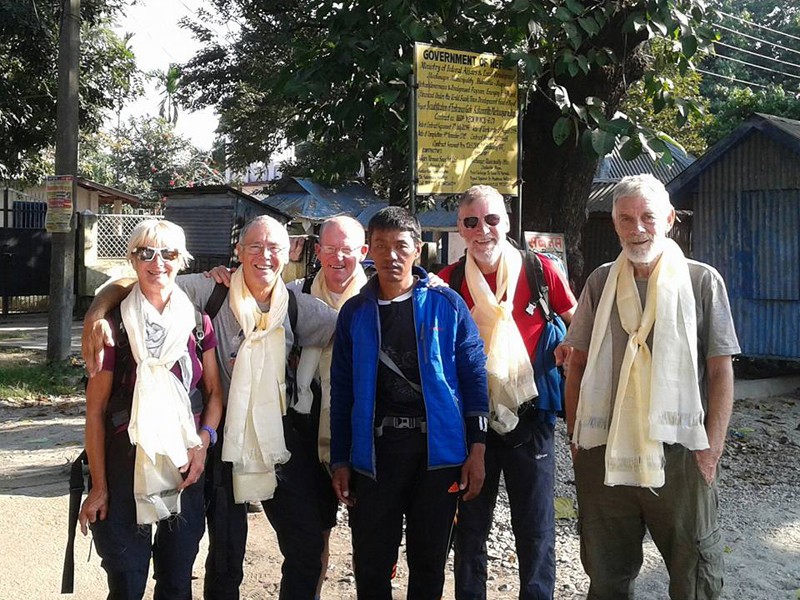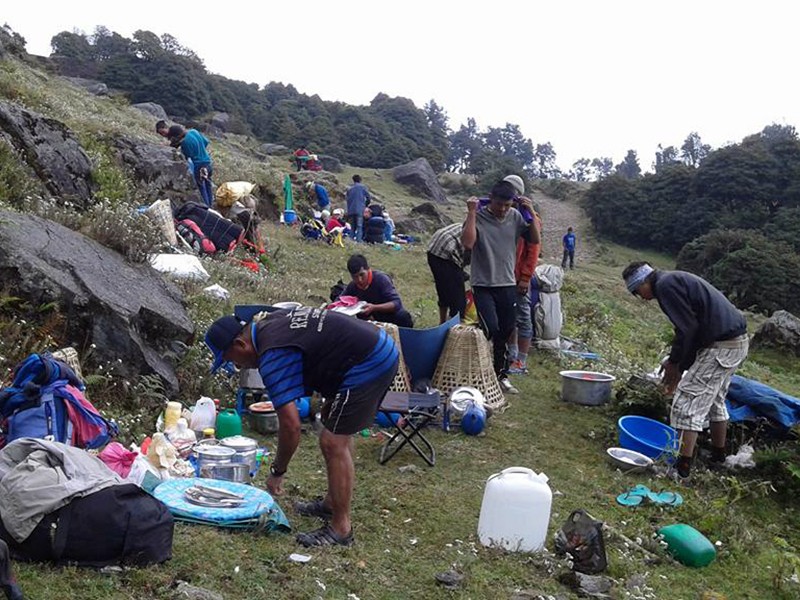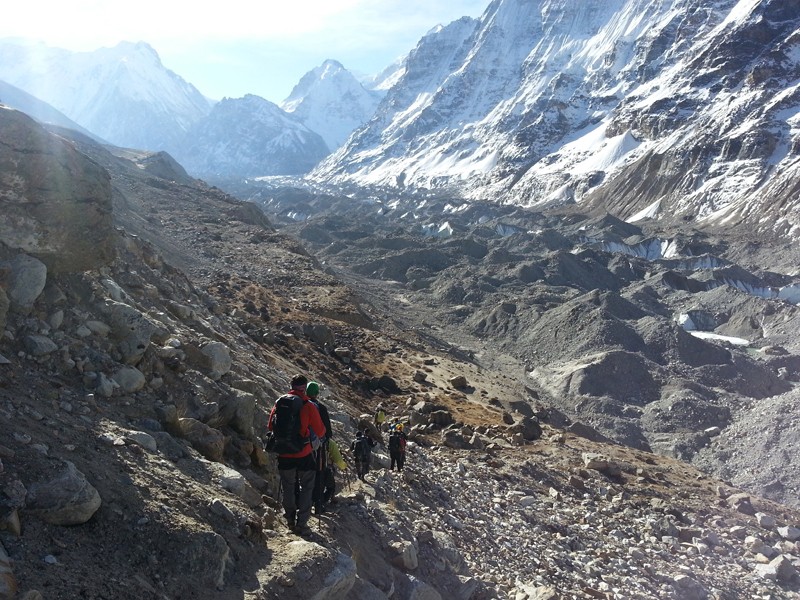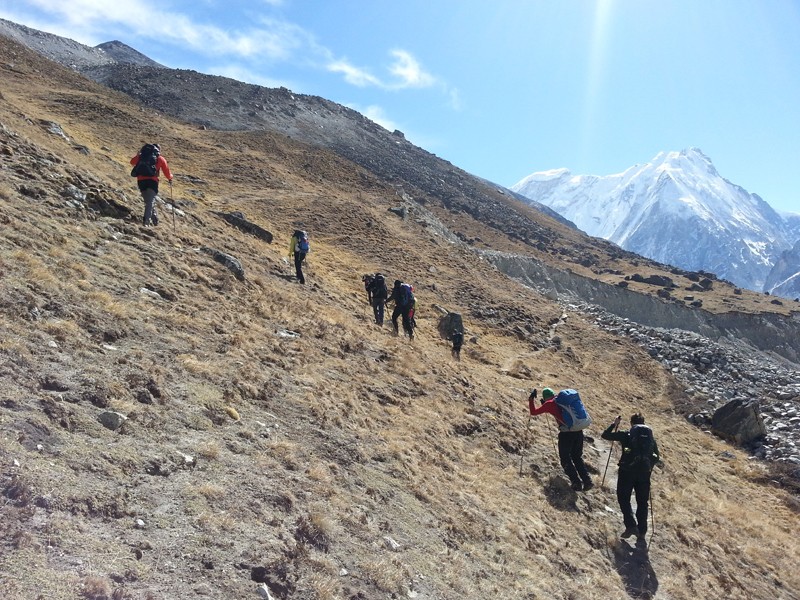Reference Code: NKBCNP
Trip Start: Kathmandu
Trek Start: Taplejung
Trek Days: 14 Days
Maximum Altitude: 5183m.
Age: 20 years to 60 years
Season: Spring and Autumn
Accommodation: Lodge/homestay or Camp
Service: Full board
Destination: Nepal
Trip End: Kathmandu
Trek End: Taplejung
Trip Durations: 22 days
Physical Rating: Strenuous
Group Size: 4-16
Theme: Walking and Observation
Meals: Standard
Just below the looming Mt. Kanchanjunga (8586 m), lies the Kanchanjunga Conservation Area. Spread in an area of 2035 sq. km, the area is made up of alpine grass lands, rocky outcrops, dense temperate and sub-tropical forests, and low river valleys with the Kanchanjunga as its crown.
Situated in north eastern Nepal in Taplejung District, the conservation area is bordered by the Tibet Autonomous Region-China in the north, Sikkim-India in the east and Sankhuwasabha District in the west.
In 1998, the Department of National Parks and Wildlife Conservation and WWF Program together launched the Kanchanjunga Conservation Area Project to implement biodiversity conservation and sustainable development.
During the spring season, the area has an excellent display of flowering rhododendrons, orchids, lilies, primula and many other flowers.The lowlands are full of tropical hardwoods. These get replaced by oaks and pine as the elevation increases. Further higher is the vegetation including larch, fir and juniper up to the tree line.Kanchanjunga Conservation Area harbors rich diversity of wildlife including the endangered snow leopard, Himalayan black bear, musk deer, and red panda. Other animals in the area include the blue sheep, and many others. Impheyan pheasant, red-billed blue magpie, shy drongo are some of the many birds found in the area.
The conservation area has a lot of ethnic diversity and culture. As the original settlers of the Upper Tamur Valley, the Limbu are the dominant ethnic group in the lower regions. The Sherpa/Lama people are in the higher altitude where they arrived from Tibet more than four hundred years ago. There are lots of Monasteries, chhortens, temples, prayer-walls which become the icons of the conservation area's cultural heritage.
For an excellent view of the Mountain Kanchanjunga, you should reach the North base camp where a place called Bangpema is the excellent point for observation of the mountain. To make a circular trek you will have to pass through the Celele Pass at an altitude of about 4000 m to drop to Tseram from where you head toward the South base camp, another excellent observation point of Mt. Kanchanjunga. Kanchanjunga which lies in the far eastern boarder line of Nepal and Sikkim. It has been well known being visible from Indian summer resort of Darjeeling. It was opened for the trekkers recently and fewer trekkers are regulated each year.
Day 04 Drive to Taplejung or Suketar
We set off early to make the journey by road from Phidim to Taplejung, or to Suketar. On arrival we meet with our porters and after loading up, we start trekking. We follow a ridge to start with, before descending through forests to the valley and our overnight stop at Lali Kharka 2270m.
Inclusion
Camping basis
All ground transportation as per itinerary
4 night hotel accommodation in Kathmandu with B/B plan.
Domestic Air fare (KTM-BDP-KTM) with airport tax(Optional)
Cargo charges
TIMs (Trekking Information Management system)
Kanchanjunga National Park Entry fee
Special Restricted Area Entry fee
Food for the members on camping basis
All camping equipment and camping charges
Medical supplies(First aid Kit will be available)
All required Nepalese staffs (salary, food, clothing, accommodation)
All Nepalese staffs insurance as per Nepalese Government rules.
Company service charge, VAT and government taxes etc.
Exclusion
International flight with airport tax.
Nepalese Entry Visa fee
Food during stay in Kathmandu
All personal equipment and personal expenses
Photography Charges, Monument charges and Monument entry fees
Personal Medical and travel insurance(must cover helicopter rescue evacuation cost)
Personal Medicine
Telephone and internet charges
Laundry charges
Alcoholic beverage, bottled drinks and cold drinks during the trip
Rescue evacuation charges if required
Staffs and porters Tips...
Equipment List
Clothing and Equipments List
» Pack to pack out - bring enough waterproof bags to carry all non-biodegradable rubbish back down the mountain.
» Remove all unnecessary packaging before leaving home.
» Bring enough warm dry clothes so that you can wrap up rather than burn firewood in the evenings.
» If you are going to trek higher than 5000m or you know it will be cold, buy an aluminum water bottle which can also be used as a hot water bottle at night.
» The easiest way to keep hydrated while trekking is to buy a 1 x liter platypus-drinking bladder to carry in your day pack.
» Make sure to buy proper trekking socks. Don’t buy synthetic socks as these promote sweating and can give you blisters. Always carry a few blister pads in your first aid kit and keep them handy in your day pack.
» Walking poles are very useful while trekking and helpful when descending.
» Please remember that waste disposal and recycling facilitates are limited in Nepal. When buying batteries make sure they are rechargeable and/or high quality so they last longer, and take them home to recycle.
More Lists
There is no definitive list. What you bring will vary according to the area, time of year and the length of your trek. Below is a suggested check list which you should adapt to your own needs. Ask yourself: Will there be snow/how long /high is the trek/are we camping?
» Good quality trekking boots with ankle support
» Lightweight shell/raincoat with hood
» Detachable fleece liner or separate fleece
» Fleece trousers
» Shorts and / or convertibles trousers- quick drying
» Sunglasses
» Sun hat and warm hat(good quality)
» Gloves
» Spare T-shirt x 3
» Sweat towel x 2
» Spare socks x 3 ( walking sock and thin inner sock)
» Small day sack
» Sun cream
» Small water bottle aluminum doubles as a hot water bottle.
» Iodine or water purifying kit,
» Soluble vitamin tablets to taste water or powder fruit drink
» Talcum powder
» Walking sticks or Trekking poles(good quality)
» Camp shoes/trainers/flip flops to wear in evening.
» Spare underwear 3
» Toilet kit
» Tissues
» Pen knife
» Bum bag
» Head torch(good quality)
» Biodegradable washing liquid / soap
» FILM
» CAMERA
» Ear plugs
» Sleeping bag liner(good quality)
» Sleeping bag(good quality-30)
» Bin bag/ gasbag to keep kit dry
» Small towel
» Lip balm
» Available in KTM
Personal First Aid (Aids Kit)
» Antiseptic
» Bandages
» Blister plasters
» Decongestant
» AMS medication like Diamox
» Eye drops – it can get very dusty on trails
» Paracetamol and/or ibuprofen
» Rehydration sachets, Imodium and antibiotics for traveler’s diarrhea
» Scissors
» Sterile dressing
» Sticking plasters and tape
» Throat lozenges / sweets
» Tweezers
» A sewing needle etc.
This trekking equipment list has been prepared by Adventure Zambuling Treks (P) Ltd.
